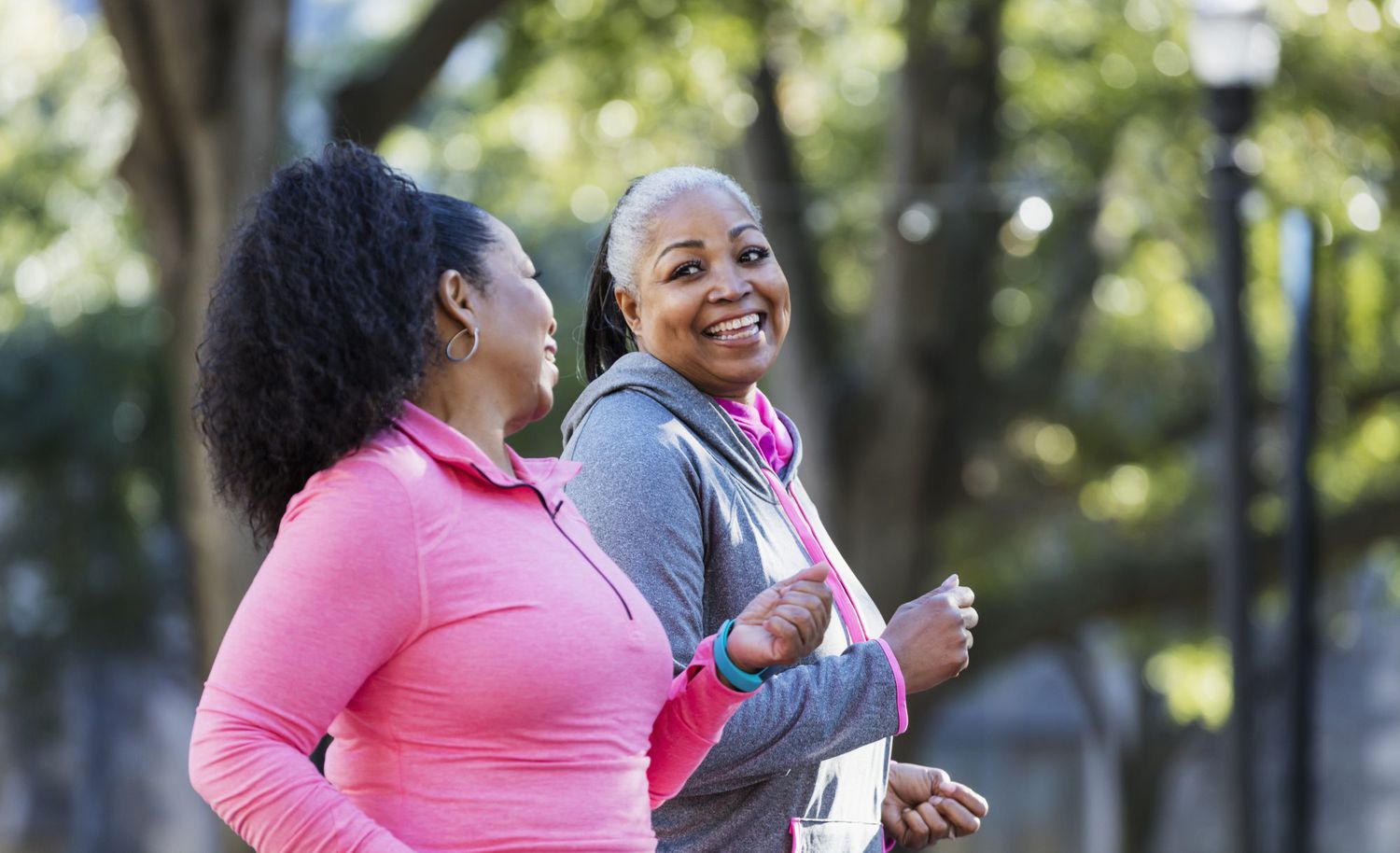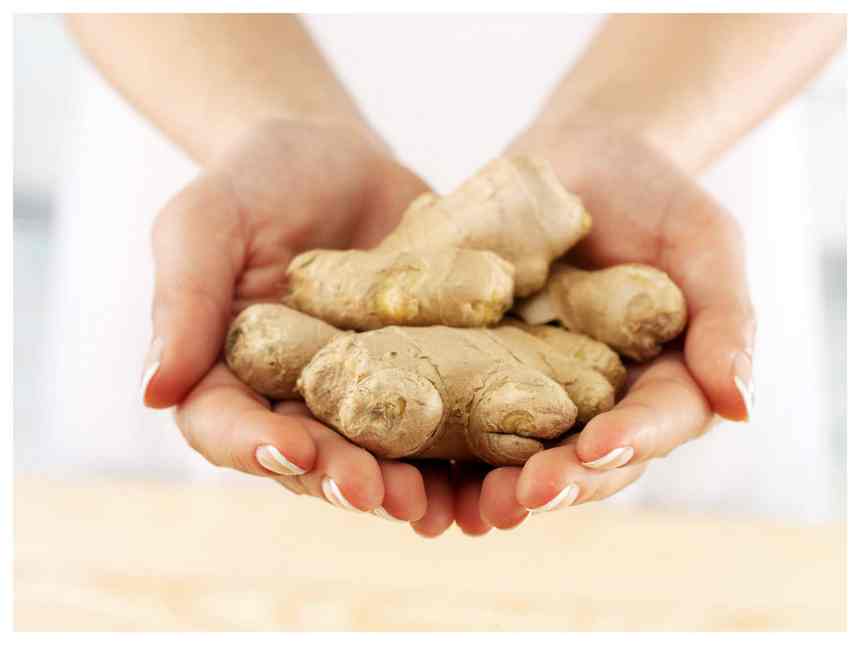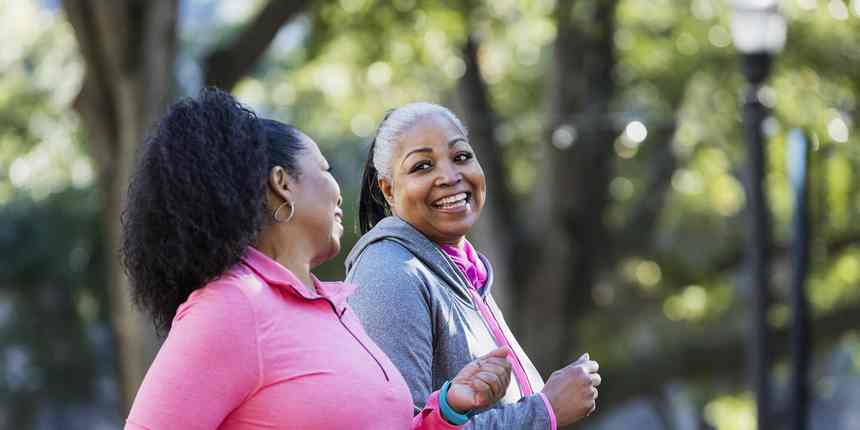If you suffer from aching, stiffness, and swelling in and around your joints, you very likely have arthritis—and you're in good company. In fact, an estimated 23 percent of all American adults—over 54 million people—have arthritis, according to the Centers for Disease Control and Prevention (CDC). There are many different types of arthritis, with the most common form being osteoarthritis, which "begins with gradual wearing down of the cartilage surfaces between the bones that make up the joint," explains Jason Kart, P.T., D.P.T., the owner and physical therapist at Core Physical Therapy—The Loop in Chicago. "The cartilage acts as a cushion between the bones, but as the cartilage breaks down, more stress is transferred to the bones underneath it. Over time, the bone starts to degenerate which leads to joint swelling and pain."
 Credit: Getty Images
Credit: Getty Images
Because arthritis affects the joints, exercising can be incredibly challenging—not to mention painful—for sufferers. If you experience a milder form of the condition, you might not be as physically limited; chronic sufferers or those experiencing severe flare-ups may have more trouble getting moving, notes Roger E. Adams, Ph.D., a personal trainer, doctor of nutrition, and the owner of eatrightfitness. "If you have arthritis in the hand or wrist, holding a simple pair of lightweight dumbbells or exercise bands can become an arduous task, and if your arthritis is in the hips and knees, just walking may be too much." The good news is that, even if your arthritis is severe, there are lower-impact exercises that will benefit your body, but avoid the affected joints. Here, experts share the best exercises for arthritis sufferers.
Related: The Best Exercises to Do in Your 40s, 50s, 60s, and Beyond
Straight Leg Raises
"Straight leg raises are a great way to exercise the other side of your leg, the quadriceps, without putting any force on the knees," says Dr. Adams. He recommends starting from a sitting position, be it on the floor or in a chair, with your leg extended. "Straighten one leg as tight as you can with your toes pointing up and lift as high as you can, aiming for 10 to 15 repetitions and then switching and repeating with the other leg," he says. "When three to four sets become too easy, you can use your hands to apply extra pressure to your thigh or even wear ankle weights—just be careful not to bend your knees."
Low-Impact Cardio
If you have hip and knee arthritis and want to keep your heart in shape, Dr. Adams recommends low-impact cardio-based activities; try swimming or even using an elliptical machine. "Walking may be too much on your joints, but these low-impact exercises are better on the hips and knees than a treadmill," he says. "Just find a setting that fits your stride and you can still have a heart-pumping workout without all the impact of walking."
Modified Squats
Dr. Adam's favorite exercises for strengthening the lower body—a must for knee and hip arthritis sufferers—is a modified wall squat using a ball. "Get an exercise ball and place it against the wall. Turn and lean on it where your mid-back and hips are against the ball," he says. "Stand with your feet about shoulder width apart and far enough in front of you; when you squat down you should be bending your knees about 90 degrees." If you feel any pain, he suggests scooting your feet further out.
Dynamic Hamstring Stretching
According to Lev Kalika, D.C., the owner of New York Dynamic Neuromuscular Rehabilitation & Physical Therapy in New York City, dynamic hamstring stretching is a great option for arthritis sufferers. "Hamstring strength and flexibility is very important for the control of the knee joint, as well as unloading of the knee joint," he says. "Use rubber-banded resistance in an unloaded position, such as with a flexed hip and extended knee."
Basic Bridge
"A bridge is a safe and effective exercise that targets glutes, hamstrings, and quads at the same time and is very good for both knee and hip osteoarthritis," says Dr. Kalika. "Better knees require stronger hips, as gluteal muscles control the knee in a transverse and frontal plane." To do a basic bridge, start on your back with your palms against the floor. Bend your knees and push off of the ground, raising your pelvis in the air. Hold yourself up for a few seconds before slowly lowering down.








